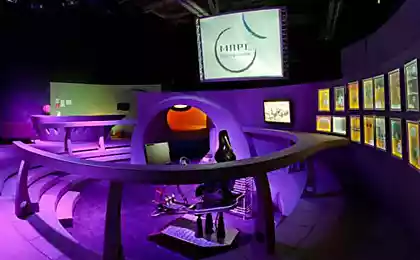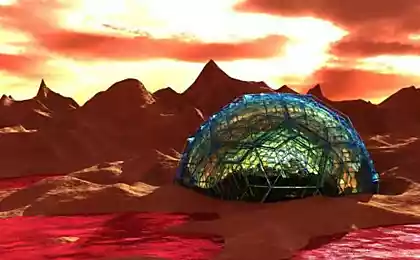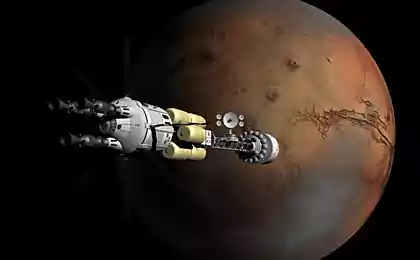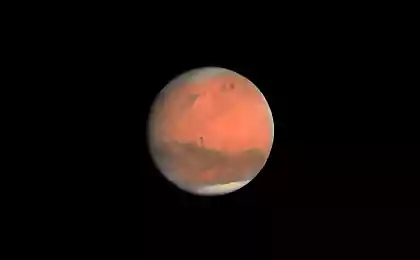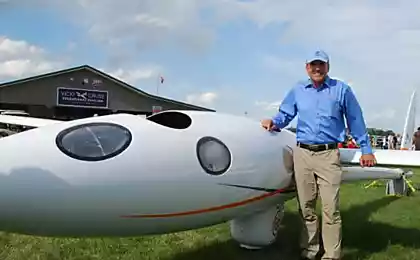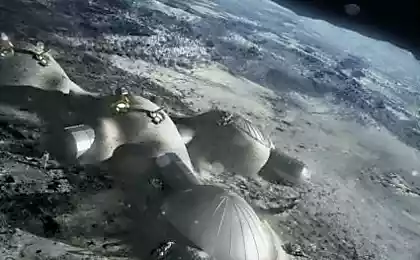411
Students fashioned glider for the Martian atmosphere
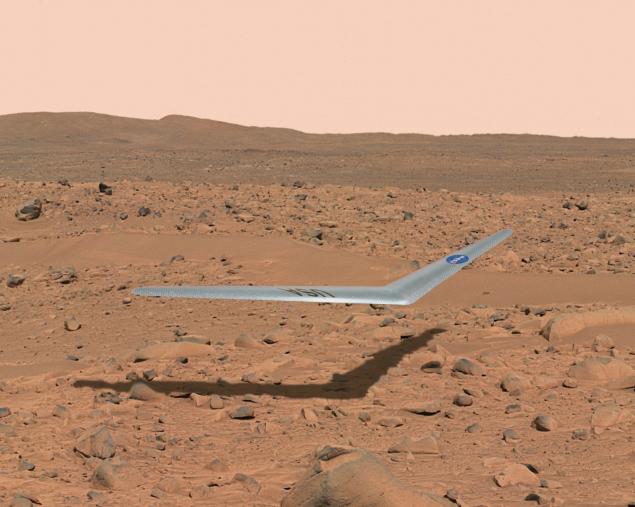
Computer Graphics. Something like this can look at the Prandtl-M Martian surface. Render: NASA Illustration / Dennis Calaba
At the airport Flight Research Center. Armstrong NASA group of students from Irvine Valley College California College successfully tested a glider prototype that sometime in the future could run on Mars. The glider, called Preliminary Research Aerodynamic Design to Land on Mars (in abbreviated form, Prandtl-M) is specially designed for flight in the rarefied atmosphere of the Red Planet.
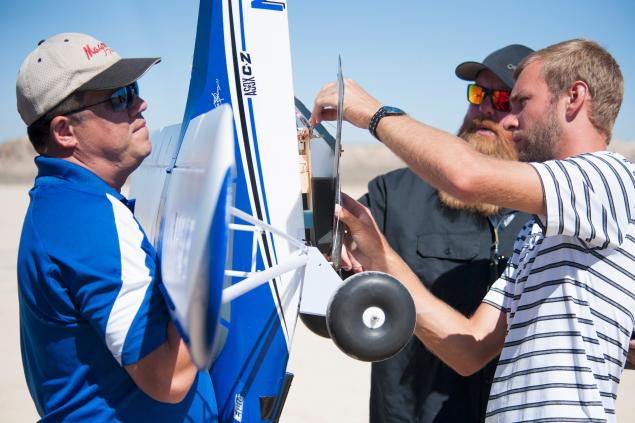
left to right: Derek Abramson (Derek Abramson), Justin Hall (Justin Hall) and Frock Alexander (Alexander Frock) attached Glider Prandtl-M for aircraft Carbon Cub, to reset it from a height of 150 meters. Photo: NASA Photo / Kyria Luxon
The atmosphere of Mars is significantly different from the Earth. It is much more tenuous. The pressure at the surface is only 0, 7 kPa at the peak of the giant Mount Olympus to 1 155 kPa at a depth of Hellas Planitia, which is 9 km below the surrounding hills and it is 7 km below srednemarsianskogo level. This pressure is approximately 1/110 of the Earth's atmospheric pressure at the surface, or equal to the Earth at an altitude of over 30 km. Martian gravity is 38% of the Earth, which is a bit easier the task of designing the device.
Due to the sparseness of the Martian atmosphere should be very light glider. Therefore, the body is made of carbon fiber. This material consists of the finest filaments with diameters from 5 to 15 microns, and is highly durable and easily.
Prototype Prandtl-M remote control was made by students themselves. NASA engineers did not specifically suggest that those on their own mistakes and correct them - just so the guys will have the necessary experience and knowledge
. In the next step the students will try to make a fully autonomous UAV that will be quite a challenge, given the weight of the restrictions.
In the future such aircraft in atmsofere Mars may collect scientific data that will be sent to the ground for analysis. The atmosphere of Mars is not completely understood, as the Martian climate. For example, in 2013, conducted the study found that the Martian atmosphere is much more water vapor than previously thought, and even more than in the Earth's upper atmosphere. Water vapor is concentrated in a water-ice clouds at a height of 10 to 30 km. However, student glider Prandtl-M will not be able to get such a great height, it will fly very close to the surface. Nevertheless, the data collected by them could be very useful.

Baker Emerson (Emerson Baker) and Caitlin Kennedy (Caitlyn Kennedy) conduct a final check Prandtl-M before the test flight. Photo: NASA / Lauren Hughes
Group of students working on a project in the framework of student programs and NASA Flight Scholars Education Unmanned Aerial Systems, which are specifically designed to ensure that pupils and students are able to participate in real research projects and NASA space missions.
Students have tried various forms of glider wings and repeatedly threw him off the roof before adding it to the glider servo motors to control the ailerons. In the end, the boys admitted to the tests in the Flight Research Center. Armstrong NASA.
The following tests Prandtl-M would drop from a height of 30 km, where the density of the atmosphere is about the same as at the surface of Mars. In principle, if the project proves viable, these drones can be launched and in the upper layers of Earth's atmosphere.
Developers believe that the glider will last about 10 minutes in the atmosphere of Mars. Such devices can be added to the payload of the transport ship, which plans to send to Mars in the years 2022-2024.
Source: geektimes.ru/post/279648/
Say farewell finally overweight: nightcap for effective weight loss.
Lost an arm woman was one of the most advanced bionic prosthesis in the world





